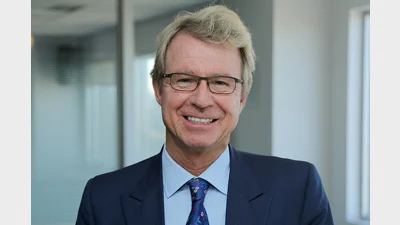Investors adjust to the ‘new normal’


Investor sentiment has shown real signs of recovery through the first quarter of 2013 but as Damon Taylor reports, the stronger sentiment is as much a sign of adaptation to a new ‘normal’ as it is to any particular market pointers.
As Australian superannuation investors returned from the Easter break, many will have found comfort in the fact that the domestic market outlook is an optimistic one.
The reporting season has been dealt with, macro issues seem diminished and overall sentiment is improving, but for Graham Harman, director of capital markets research for Russell Investments, this is a change in fortune that has been in the wind for some time now.
“It’s not like people woke up one morning and felt happier about things,” he said. “It’s been more an abatement of the run-rate of debacles that we’ve been having.
“You can’t keep white knuckles forever,” Harman continued. “So with the worst of the financial crisis now several years behind us, it’s inevitable that you’re going to start to relax.”
According to Harman, one had only to look at consumer sentiment numbers and their recent increase to realise that the equity market outlook was improving.
“But for me, the big story is not that investors have suddenly become optimistic about the outlook for the economy, and not that they’re suddenly backing growth and diving into these higher risk, forward-looking assets,” he said.
“The change has actually been at a portfolio level, across the whole asset space.”
Describing the change alluded to by Harman, Lee Mickelburough, portfolio manager, Perennial Growth for Perennial Investment Partners, agreed that the asset class shift that had taken place had been significant.
“Not that long ago the other competing asset class, term deposits, were yielding 6 per cent plus, Government guaranteed typically, or issued by a AA rated bank,” he said.
“And with the market not going anywhere, investors were sitting there comfortably, earning a reasonable rate of return.
“But what’s happened through late last year as we got stabilisation in Europe is that the bond market started to improve, spreads came in and then Australian banks started cutting deposit rates,” Mickelburough explained. “So the competing asset class fell away and then the tail risks fell away.”
For Mickelburough, the final ingredient had been investor confidence.
“So you had this combined event where Mum and Dad were getting less yield but getting a bit more confident and then share prices started to creep up,” he said.
“That’s the simple summary of what’s happened because the earnings reports were really just okay without being top-line.
“With the economy not moving a great deal, it was cost improvement and lower interest rates – that’s how we were getting reasonable profit outcomes.”
Indeed, for Michael Price, co-head of fundamental Australian equities for AMP Capital, the reality that this market rally has run well ahead of any recovery in earnings means that fund managers will be watching it carefully.
“That’s what we’ve all been thinking about and there are a few possible reasons which people are giving,” he said.
“One is just that we see things turning around, so it’s a cyclical recovery, and this will come through in earnings in the next year or two.
“But the other couple of reasons relate the macro environment,” Price added. “So the second is really that people have talked about tail risks being diminished and so people are happy to put a higher multiple on the market on the back of that.
“They’re satisfied that Europe, you could argue, is promising to do whatever it takes, so that seems to have become less of a risk.”
And like Harman and Mickelburough, Price said that the third possible reason was what he termed the search for yield.
“Equities have been looking like great value compared with bonds for a while,” he said.
“But it’s only now people are being almost forced to switch out of term deposits and into something like equities if they want a higher yield.
“So no matter how you look at it, the market is rallying and it’s a reasonably broad-base rally,” Price continued. “And look, all three of those explanations have a reasonable degree of merit.
“The market is still not at all expensive on valuation grounds so there’s definitely room for further upside.”
Yet while an Australian equities market rally is clearly in evidence, it is just as clear that investor appetites have been conditioned by past market performance.
The yield once sought from term deposits remains popular and for Harman, it is a theme that continues to dictate which stocks are the standouts.
“Overall it’s that theme of quality defensive yield, they’re the sectors and stocks that have done well,” he said.
“So health care, there’s that quality defensive aspect there, and probably banks and financials have been the other big example; they’ve definitely been an outperformer.
“In the underperformer camp, things like smaller companies are there,” Harman continued.
“And again, the reason is that they’re a little bit more growth reliant and, as I said previously, it’s not that people are more excited about growth, it’s just that they’re looking for other places to park their money and get a reasonable income and a reasonable yield.
“So if you think that smalls need growth in order to make sense, that’s probably one of the reasons why they’ve been less than stellar.”
Similarly, Mickelburough said that the domestic equities story thus far had been all about yield.
“It’s definitely the yield stocks that have been the standouts,” he said. “The retailers have been pretty good for the last three or four months really, as people have been anticipating a recovery.
“Health care stocks have been quite good all the way through and property stocks, because of the yield, have been quite good,” Mickelburough continued.
“The supermarkets in Woolworths and Wesfarmers have been very very strong as well, and that’s a symptom of the fact that they’re good, well-run businesses that dominate their markets.
“But anything really defensive with good yield has been quite a strong segment.”
However, according to Mickelburough, the sector to watch was the resources sector.
“So during the bull market, activity was wholly and solely about getting tonnes out of the ground,” he said.
“It was very production focused, content to worry about the costs later, and rather than giving any money back to you in dividends or cash return they set out to keep building the Outer Harbour, the Olympic Dam, and so on.
“But that’s absolutely stopped now,” Mickelburough pointed out. “We’ve seen management changes at all the major mining companies and we think the strategy is now about running the assets really hard and efficiently, running for cash.
“Of course, the next step for that is balance sheet management, so even though they’re the stocks that the market’s ignored this year, that’s the segment to watch.”
But while retail and institutional investors alike may be looking to move back into domestic equities right now, it is worth noting that a superannuation sea-change may be in the offing.
If it hasn’t already, the industry’s growing realisation that super fund demographics are changing is likely to mean a significant shift in domestic equities investment and for Harman, the question before fund executives is twofold.
“One is with regard to the type of equities and secondly, it’s the amount of equities full stop that these funds are going to be owning,” he said.
“If you think about the growth in the superannuation industry and the components of that growth, if we double in the next 5 to 10 years from $1.3 trillion to $2.6 trillion and if the proportion in post-retirement goes from maybe 20 per cent to 40 per cent, clearly that post-retirement segment is going to increase from $0.25 trillion up to $1 trillion.
“That’s where the real growth is going to be and that’s a section of the market requiring assets that are typically much more defensive.”
However as significant as post-retirement growth is likely to be, Harman said that it was highly unlikely that fund members could afford to move away from equities completely.
“And that’s simply because retirement is so long now,” he said. “If you retire at 67 and die at 97, that’s still 30 years you’ve got to think about so how could there not be a place for growth assets?”
Equally cognisant of the demographic shift occurring within superannuation, Price said that a change in focus was undoubtedly necessary.
“As an industry, most of our products were originally focused on the accumulators and the reality is that retirees have different needs,” he said. “And, of course, some people seem to think that that may lead to a reduction in the allocation to equities.
“I’m not completely sure of that but ultimately what retirees do need is a growing income stream and equities are very well placed to do that,” Price continued.
“If we look at tax effectiveness, Australian equities are the most tax effective in terms of imputation credits, the most tax effective investment for retirees.
“So in terms of the overall allocation to equities, yes I think conventional wisdom is that they might reduce but I’m not entirely convinced the shift will be so simple.”
In fact for Harman, while a simple dial-down in equities allocations may be one approach, there are certainly others available.
“Our research shows that retirees are five times more risk averse than pre-retirees, so that definitely suggests a dial-down from equities,” he said.
“And for some of that dial-down, I think it’s appropriate, it goes into cash and term deposit-type investments. But I think there’s also a third path, which is that increasingly some of that money will be going into more diversified options.
“I’d actually suggest that it will be going into alternative investments,” Harman continued.
“Even though there’s a liquidity issue, I think there’s room for some small proportion of that to go into less liquid investments which also offer return enhancement together with some stability of reported price.
“All of that’s comforting stuff if you’re retired.”
Changing focus to look at what changes might eventuate within the domestic equities allocations specifically, Harman said that the obvious trend would be towards income-generating funds.
“Income funds, I think, will continue to have some attraction, not only because retirees need income to live but also because those income funds may have more appropriate characteristics suitable for the types of outcomes that retirees are trying to achieve,” he said.
“So they’re of a lot more stable-type, quality investments, and typically they’ll be exactly the same types of stocks that we’ve just described as having done well in the last six months.
“The other thing I think we’ll see is a growth in that centre section of the market, in between the pure passive funds and the traditional high active funds,” Harman added.
“I think we’re going to be seeing more of the smart beta, quantitative processes with managed risk, managed volatility and lower cost – more systematic and disciplined approaches to reaping a little bit of excess return from the equity market.
“But overall, it’s going to be the diversification story that dominates the outcome for retirees rather than a naive shift just from equities and back into cash, simply because cash isn’t going to do it for you in delivering the returns or even the income that you need.”
Of course, changes within super fund investment appetites are not without parallel in domestic equities funds management.
As with so many things, the business has been changed significantly by the global financial crisis and according to Harman, its effects are still being felt.
“I actually think that people came out of the financial crisis with a reassessed view about what exactly their risk appetite was,” he said. “And, in particular, I think people realised that they thought they were up for more risk than they could actually stomach.
“Then also from a regulatory point of view, there is a greater requirement to think about the risks that you’re taking,” Harman continued.
“And both of those themes support the two themes I believe will become more commonplace – smart beta and more systematic approaches to medium risk management styles.”
Predicting similar themes with regard to investor demand, Price said that separating beta and alpha would become more and more important.
“So when you buy a manager, such as us or any other active manager, you’re getting exposure to the market and you’re getting exposure to active management,” he said.
“And both of those are valuable to people. But people are realising that if all you’re looking for is exposure to the market, you can do that reasonably cheaply, you can have a go at it yourself, you can use an index fund.
“But what we provide, and what you simply can’t get cheaply elsewhere, is alpha, value-added, beating-the-benchmark, active management.”
And for Price, it is the realisation of what alpha is worth when compared against beta that would also dictate how managers were selected in a MySuper world.
“If you look at MySuper and one of the consequences of it, which may or may not have been intended, it is that fees are really coming down,” he said.
“But the amount that those fees are coming down can easily be offset by a manager who can deliver top-quartile, high second-quartile performance.
“It seems really obvious but it’s a bit silly to say 0.2 per cent in fees and give up 1 per cent in outperformance – that’s just not a good trade-off,” Price continued.
“People perhaps have lost faith in the industry that they can deliver that, but the evidence is still there, we have done that here, we’re confident we can do it in the future.
“So it’s about reminding people of that fact and then delivering products which are focused on that and not index-hugging products but high alpha products.”
But the final point, according to Harman, and one fund managers would be well served to remember, was industry consolidation.
“We’re seeing superannuation funds, pension funds, increasingly consolidate at the big end of town,” he said. “And that raises questions for things like small cap management.
“Increasingly, there’s going to be more investment approaches where things are just too small to make a difference,” Harman added.
“You can make a difference in a $1 billion fund but you can’t make a difference in a $10 billion or a $20 billion fund just because some of these Australian stocks are too small and again, I think that pushes back into the more diversified space and the multi-asset space.
“It’s going to be pushing funds offshore within equities and its also going to be pushing funds out of equities and into real estate, international real estate and that whole alternatives space.”
So as both super funds and retail investors look ahead to what seems a more buoyant domestic equities market, the key, as always, is discernment.
Indeed for Mickelburough, it is vital that investors not rush into stocks simply because they’re defensive.
“I’m personally counselling clients against rushing into these defensive, expensive sectors,” he said. “And I’m looking at stocks like Telstra, Woolworths, Wesfarmers and Westfield where the earnings haven’t really gone anywhere but the share prices have just sky-rocketed.
“They’re supposedly the defensive stocks and I’m thinking ‘well, actually no because the share price suggests that they’re significantly over valued’,” Mickelburough continued.
“So I’m trying to counsel them to look at other aspects of the market and that means that we’ve got a very different portfolio to that because we’re getting valuation upside in other areas of the market.
“That’s been my pitch from a stock portfolio positioning perspective.”
Largely in agreement, Harman said that the message to super funds is that what may have been good value six months ago will not necessarily be good value going forward.
“Firstly and particularly as low interest rates and low yields are increasingly rolling out through the various asset classes, we’re seeing not only equity markets pop up but we’re seeing credit spreads come down, we’re seeing yield premiums on emerging markets come down and so on,” he said.
“So basically there’s been this chase for yield, a lot of that has now been embedded into stock prices.
“So more than ever, I think there’s going to be a need to be actively managing multi-asset portfolios in the sense that what was good value six months ago is not necessarily good value anymore.
“We need to keep moving, keep looking for new alternatives where there are still pockets of value.”
But Harman’s final warning was to be careful of a portfolio’s exposure to listed equity risk.
“There’s still a very large exposure to listed equity risk in many balanced portfolios and I think that’s an ongoing theme,” he said.
“But following the run-up we’ve had in listed equity markets, it’s now more timely than ever to really look for other ways to achieve return premiums without necessarily going into the standard listed equity space.
“So again, it’s unlisted, it’s real estate, it’s alternative investments,” Harman continued. “It’s about shifting at least some of that return premium that you’re seeking out of equity market beta and into things like hedge funds or alpha generating-type approaches.
“That’s where we see things going.”
Recommended for you
Investors have slashed their US equity allocations to the lowest level on record, according to new data from Bank of America.
The message from experts in international trade and economists is that the Australian government should refrain from retaliating with reciprocal tariffs.
The market correction forecast by AMP’s chief economist is in full swing, with three weeks of turbulence culminating in significant losses on Tuesday.
Following a strong risk appetite in January, institutional investors have pulled back in February, with risk-seeking activity dropping to zero amid a decline in equity allocations.













